Feeling Blue: In Pursuit of Elusive Hammerheads
In the ever-evolving landscape of marine conservation, we often find ourselves pursuing elusive species and the hidden aspects of their behaviour and ecology. Our project “Essential habitats for smooth hammerheads” was no exception. Based in southern Portugal, we set out on a mission to map potential nursery habitats for the vulnerable smooth hammerhead sharks, armed with the latest in acoustic and satellite telemetry tags.
Our work began with a comprehensive mapping of the study region, off the coast of Sagres, carefully charting its bathymetry. In parallel, we collected data on both historical and recent shark occurrences in the area, aiming to pinpoint potential aggregation sites. Once this preparatory phase was completed, we headed out on the boat to deploy bottom-fixed longlines, using squid-baited hooks. Inspired by previous successful efforts in the Azores Archipelago, we were convinced that this method was our most promising avenue for capturing our main target: immature smooth hammerheads.
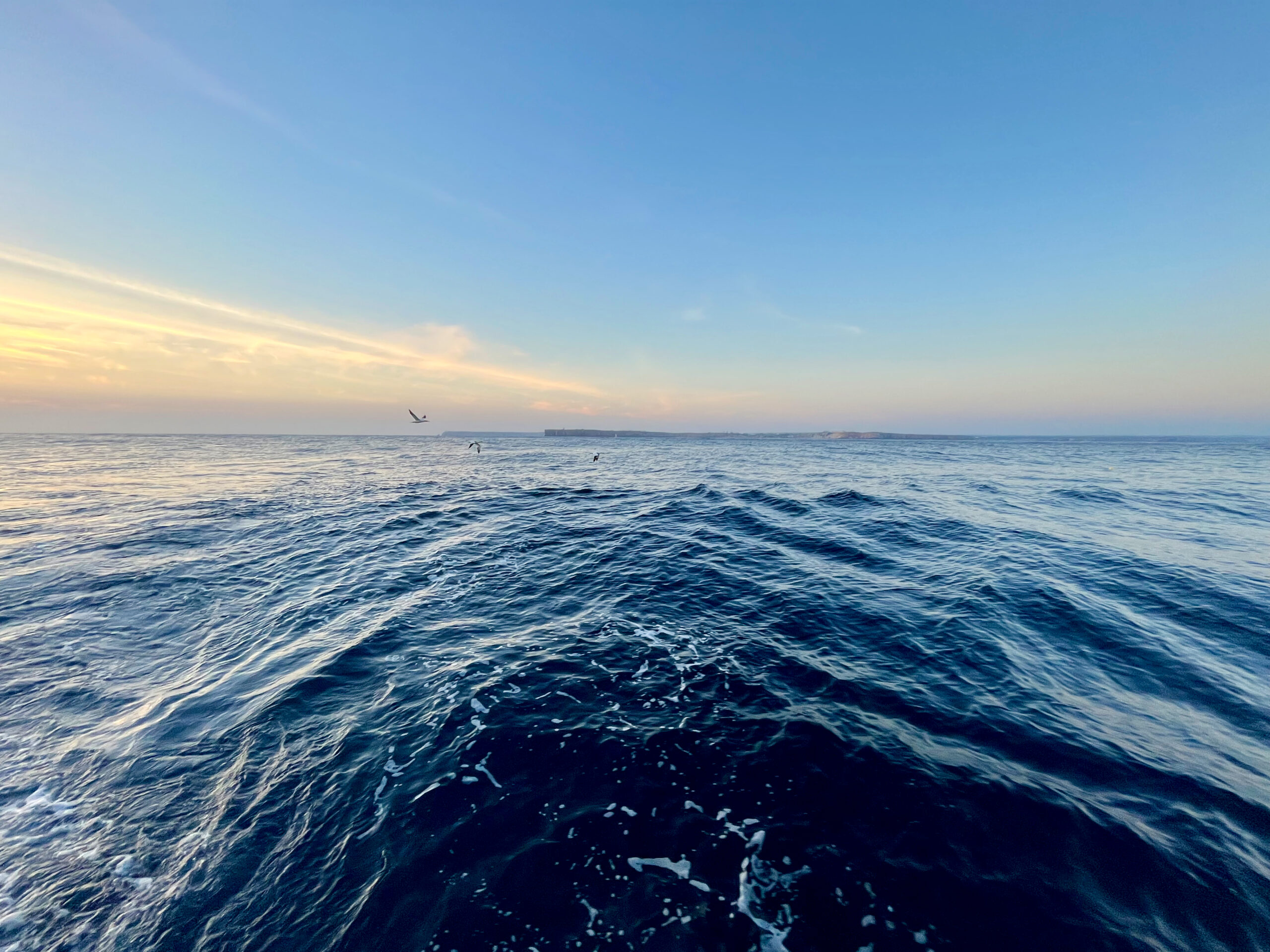
As the sun dips below the horizon, the team waits patiently as the fishing gear is set adrift, just off the coast of Sagres. Photo © Miguel Gandra
However, as we embarked on our journey, we quickly realized that science out in the ocean can be a humbling experience. Despite the recent sightings of sharks in the area and our thorough planning, our efforts to catch smooth hammerhead sharks yielded no results. We faced the stark reality that wild animals in their natural habitat are, quite literally, as slippery as fish. Adding to the challenge, we had only relatively few days at sea due to the harsh weather conditions.
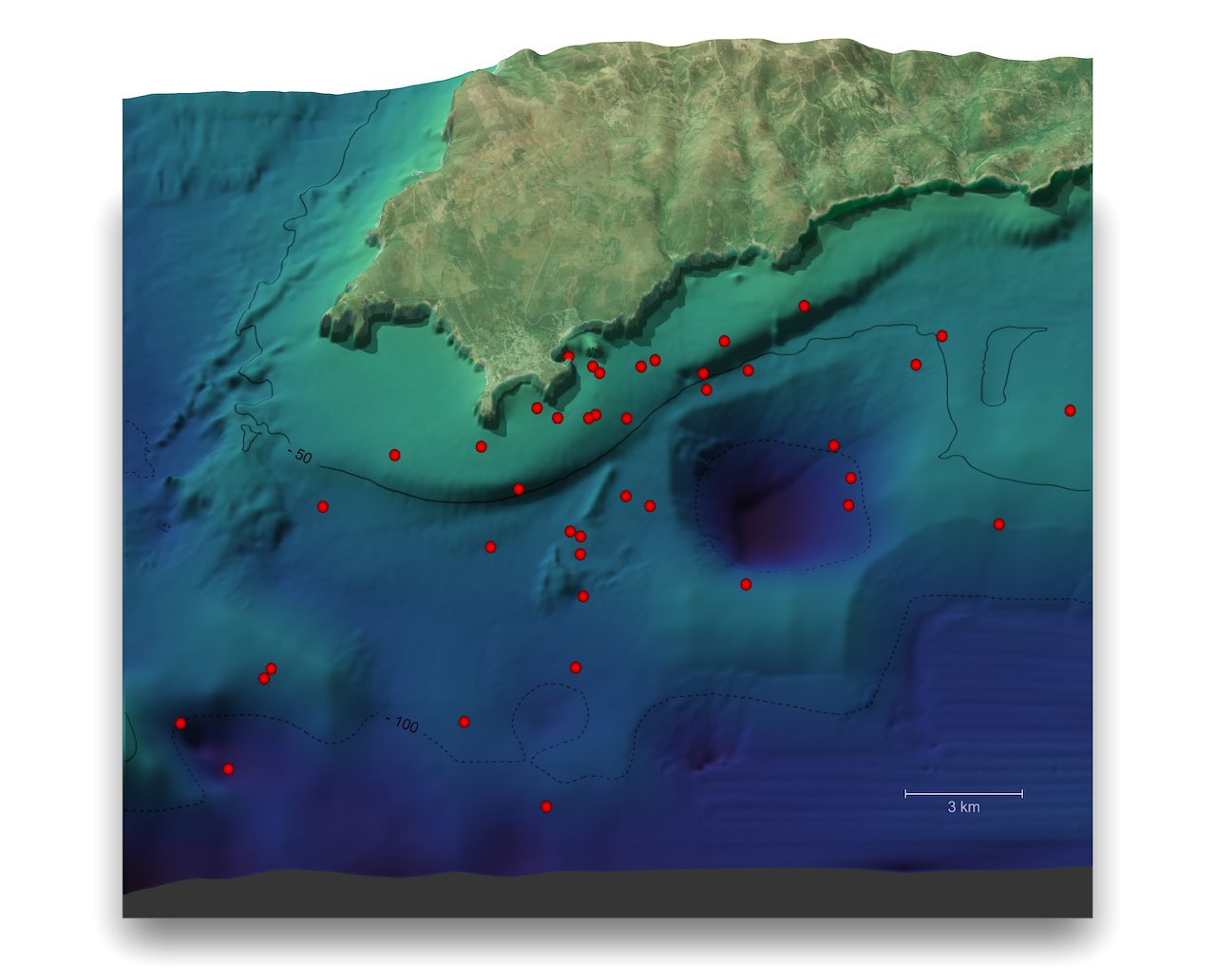
Digital elevation model of the Sagres coast. Red dots illustrate some of the reported smooth hammerhead sightings. Image © Miguel Gandra
But here’s the essence of this story: Failure in science is not a dead-end; rather, it serves as a stepping stone for growth and progress. After multiple hours at sea, we came to terms with the unpredictable nature of fieldwork, and instead of dwelling on our missed target, we shifted our focus to make the most of the circumstances. Indeed, we turned our attention to the unexpected silver lining of our campaign. Although smooth hammerheads eluded our grasp, we managed to capture and study another captivating species – the blue shark (Prionace glauca). In a twist of fate, we seized the opportunity to acoustically tag one of these animals, which are currently listed as endangered in the North Atlantic by the IUCN Red List. This achievement will hopefully represent a first step in uncovering their regional movements and spatial ecology, paving the way for broader ecological studies in the area.
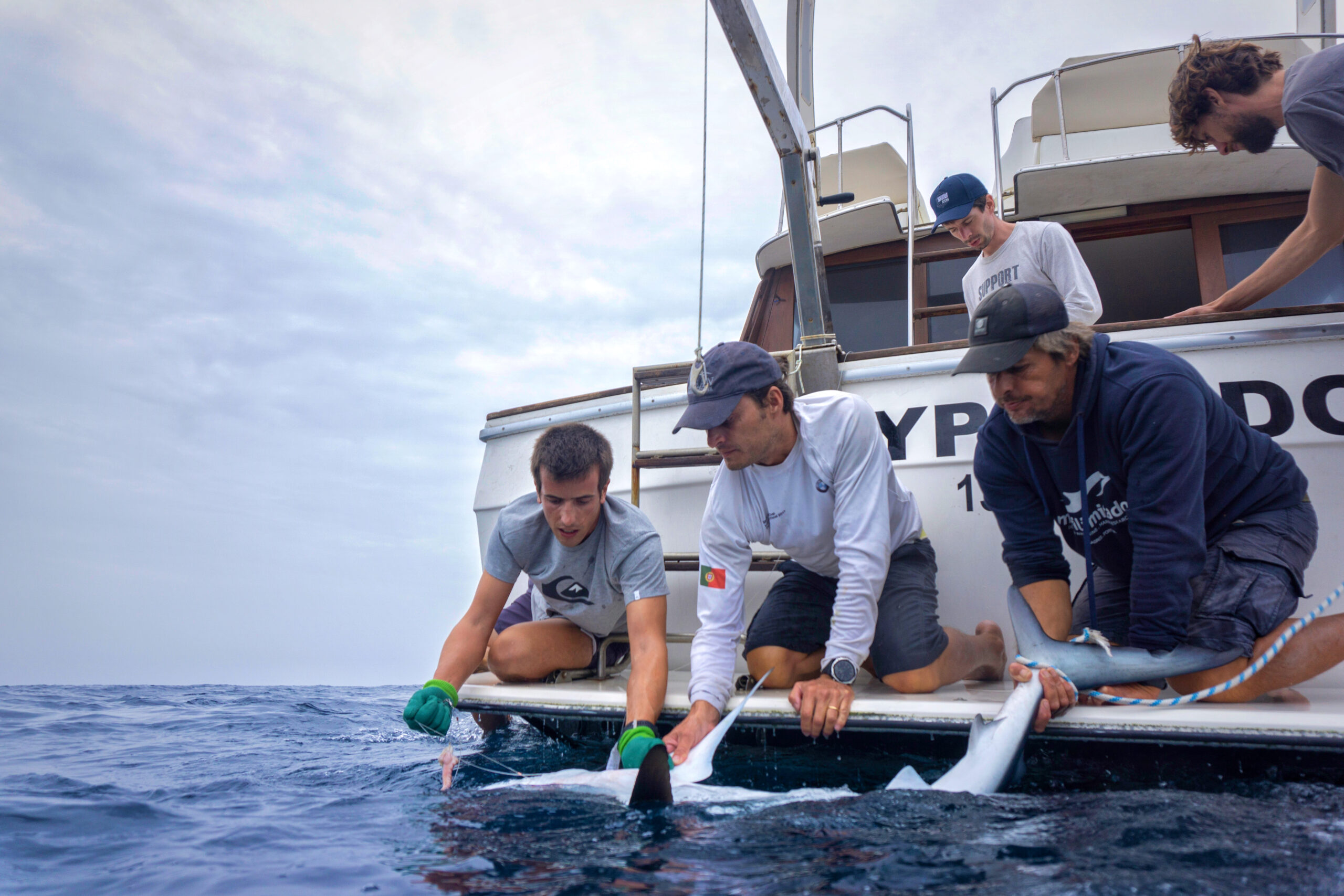
Gearing up to tag a blue shark with an acoustic transmitter. The shark is carefully placed upside down, inducing tonic immobility, to ensure a stress-free process and reduce the risk of harm. From left to right: Miguel Gandra, David Abecasis, Sebastian Kraft, Ricardo Silva and Lucas Ramírez. Photo © Michal Babiarz.
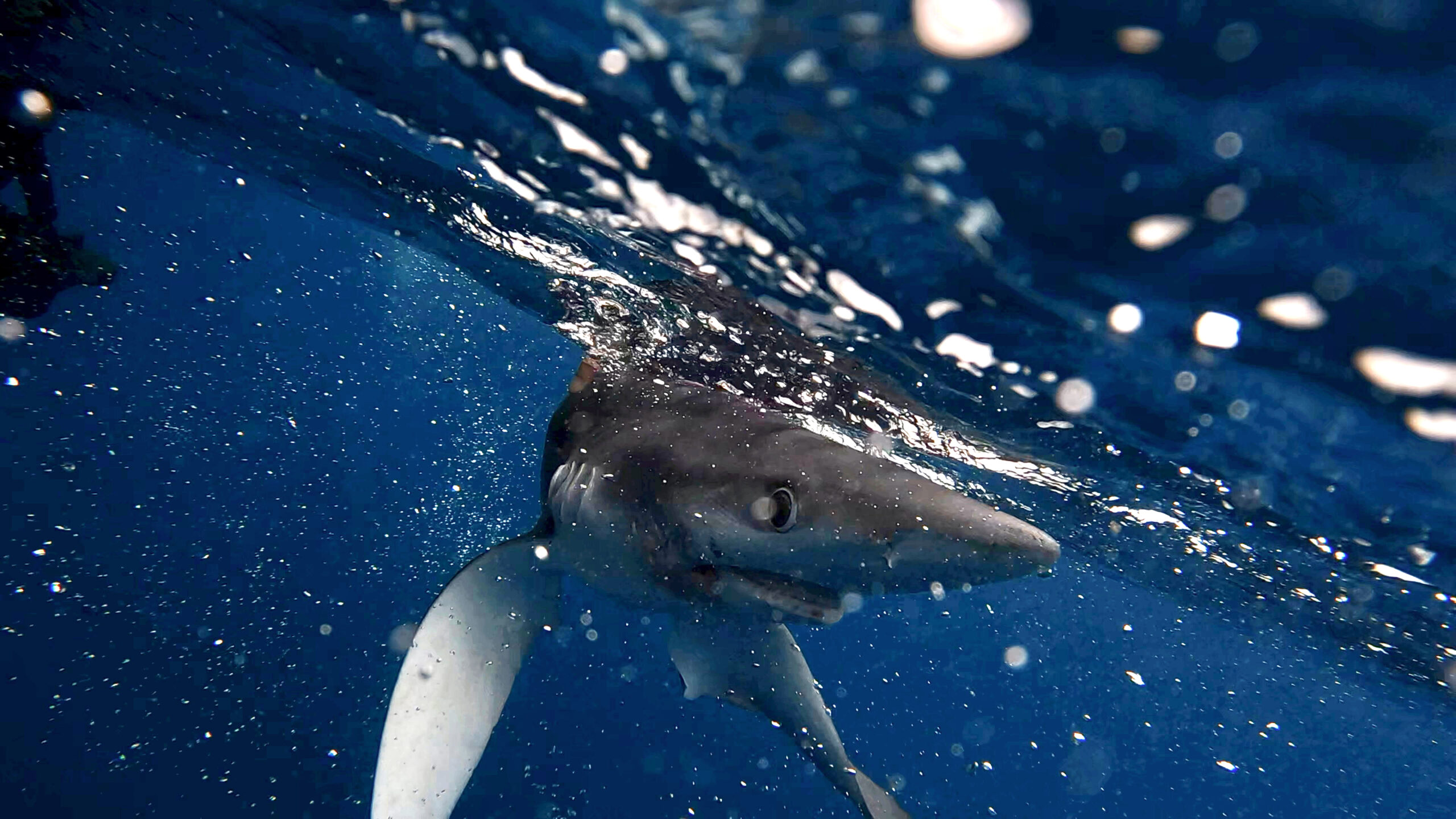
Blue shark (Prionace glauca). Photo © Miguel Gandra
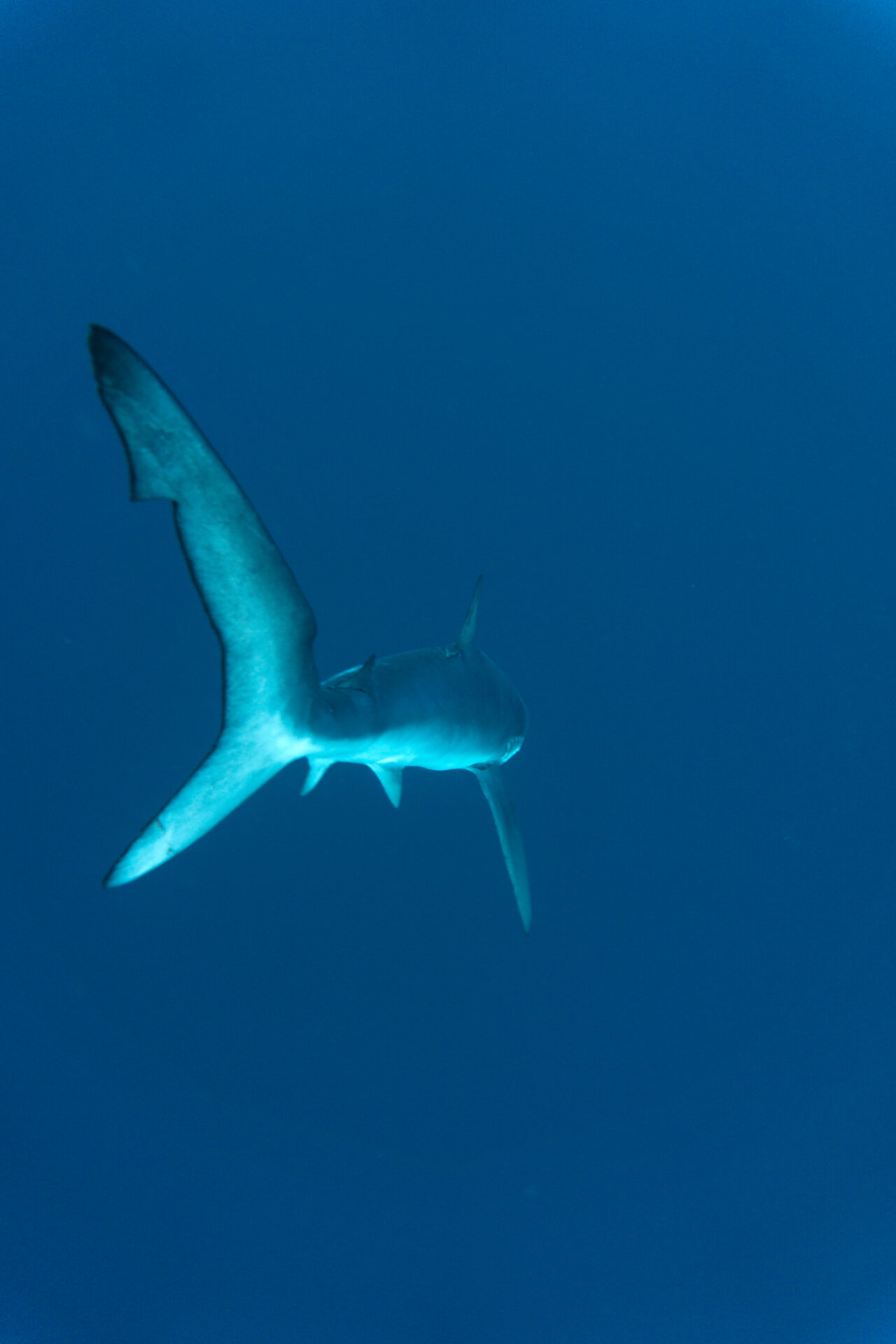
Tagged female swimming away upon release. Photo © Michal Babiarz
In the world of science and conservation, setbacks and failures are part of the process. They teach us resilience, adaptability, and the importance of patience in our mission to safeguard the oceans. Our recent campaign, though ultimately unsuccessful, has left us with a wealth of experience and knowledge that will undoubtedly prove invaluable for our future efforts. After all, it’s not the failures that define us, but how we rise from them, stronger and more committed than ever. Our work with smooth hammerheads continues, and while we’ve yet to unlock all their secrets, we remain devoted to our determination to study these amazing animals. We look ahead with optimism and cannot wait to get back to the field to start unveiling the enigmatic lives they lead along our coastlines!
